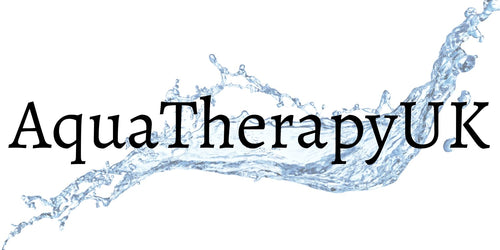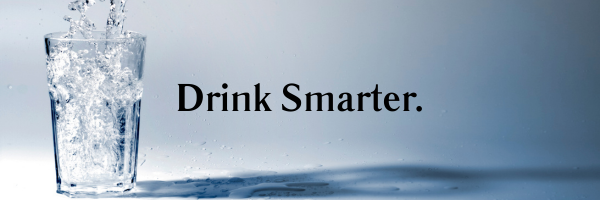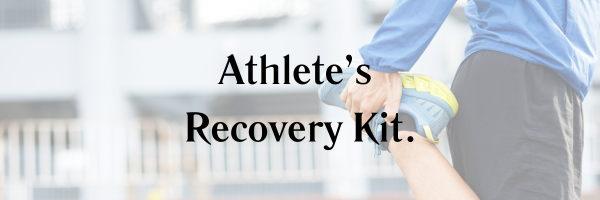The Athlete’s Recovery Kit: Top 5 Science-Backed Tools
To do well in sports, recovery is just as crucial as training. Muscles cannot grow, adapt, or mend without adequate recuperation, which results in weariness, damage, and halted progress. Evidence-based methods are now accessible to UK athletes to improve performance, decrease pain, and hasten recovery. With benefits supported by statistics and context relevant to the UK, this article outlines five of the best muscle healing methods athletes should consider incorporating into their regimens.

Muscle Recovery Tools
For athletes looking to improve performance and avoid injuries, efficient muscle recovery is essential. There are numerous tools available in the UK to aid with this process. Reliable sources support these five crucial muscle healing resources:
1. Massage Guns
Massage Guns offer percussion therapy by sending quick pulses to muscular tissue. This method lessens lactic acid accumulation, increases blood flow, and eases muscular soreness. Because they work well for deep tissue massage, athletes frequently use devices like the Theragun and Hypervolt.
Price (UK): Approximately £60 to £300, depending on the model and retailer.
Compatibility: It suits athletes across various disciplines, including runners, cyclists, weightlifters, and team sports players.
Sessions: Apply to targeted muscle groups for 30 seconds to 2 minutes per area. Use before workouts to activate muscles or after workouts to aid recovery.
Mechanism of Action: Massage guns deliver percussive therapy, providing rapid bursts of pressure to muscle tissue. This stimulates blood flow, reduces muscle tension, and helps alleviate soreness.
Time of Administration: Ideal for use immediately post-exercise to reduce delayed onset muscle soreness (DOMS) or pre-exercise to warm up muscles.
Benefits:
- Reduces delayed onset muscle soreness (DOMS)
- Enhances circulation
- Accelerates muscle recovery
Scientific Support: According to a 2021 study published in the Journal of Sports Science and Medicine, using percussion therapy to afflicted muscle areas for just five minutes can reduce DOMS by as much as 30% compared to control groups [1]. Because of its ease of use and advantages for self-administration, percussion therapy is a legitimate substitute for traditional manual therapy in improving hip range of motion in athletes [2].

2. Foam Rollers
In the UK, foam rolling has become a standard part of recuperation regimens. This self-myofascial release therapy enhances blood flow and eases tense muscles by dissolving adhesions between muscle layers and fascia. Frequent use can help you recover from exercise more quickly.
Price (UK): Ranges from £10 to £40, depending on brand and quality.
Compatibility: Beneficial for all athletes, from casual gym-goers to professional sportspeople.
Sessions: Roll over specific muscle groups for 1–2 minutes each. It can be incorporated into warm-up or cool-down routines.
Mechanism of Action: Foam rolling, a form of self-myofascial release, helps alleviate muscle tightness, improve blood flow, and increase range of motion [3].
Time of Administration: Effective both before exercise to prepare muscles and after exercise to aid recovery.
Benefits:
- Reduces muscle stiffness
- Improves range of motion
- Enhances blood flow
Scientific Support: Foam rolling after vigorous exercise decreases muscular pain and increases range of motion, according to research published in the Journal of Athletic Training [4]. According to a meta-analysis, foam rolling is a useful rehabilitation aid since it efficiently improves the range of motion and lessens muscular pain [5].

3. Cold Therapy (Ice Baths)
Although British athletes have long used ice baths for recuperation, more focused cold therapy devices have become effective substitutes. These can be anything from basic ice packs to complex cold water circulation systems. Cold treatment involves submerging the body in cold water to alleviate muscle soreness and inflammation. Athletes employ this tried-and-true technique to speed up their recuperation.
Price (UK): Home setups can cost between £50 and £200, depending on equipment.
Compatibility: Commonly used by athletes in contact sports, endurance events, and high-intensity training.
Session: After exercising, immerse the body in cold water (10–15°C) for 10–15 minutes.
Mechanism of Action: Cold therapy reduces inflammation and muscle soreness and accelerates recovery by constricting blood vessels and decreasing metabolic activity.
Time of Administration: Most effective when used within 30 minutes post-exercise.
Benefits:
- Alleviates muscle soreness
- Reduces inflammation
- Speeds up the recovery process
Scientific Support: Both active recovery and cold water immersion were found to be successful in reducing muscular stress and inflammation following resistance training, according to research published in the Journal of Physiology [6]. Because it used objective measurements to directly compare two popular recovery techniques—exposure to extremely cold air at -135°C and cold-water immersion at 10°C—and because it specifically focused on female athletes—frequently underrepresented in sports recovery research—this study is especially valuable. According to the research, even if cryotherapy chambers have more sophisticated technology, traditional cold-water immersion may still provide significant recovery advantages at a significantly cheaper cost [7].
4. Magnesium Supplements
In the UK sports community, magnesium has drawn much attention as a necessary mineral for muscle repair and general athletic performance. Numerous metabolic activities linked to muscle function, such as protein synthesis, energy production, and neuromuscular transmission, depend heavily on this essential electrolyte.
Price (UK): Approximately £8-£25 for a month's supply, depending on brand and dosage.
Compatibility: Beneficial for athletes experiencing muscle cramps, fatigue, or those with magnesium deficiencies.
Session: Commonly taken orally in forms like magnesium citrate or bis-glycinate. Dosage varies; typically 300–500 mg daily.
Mechanism of Action: Magnesium is crucial in muscle function, energy production, and nerve transmission. Supplementation can help prevent cramps and improve muscle recovery.
Time of Administration: 1–2 hours before exercise to maximize benefits.
Benefits:
- Supports muscle relaxation
- Prevents cramps
- Enhances energy metabolism
Scientific Support: Studies have repeatedly demonstrated that physical activity raises magnesium requirements. Magnesium supplementation can dramatically enhance exercise performance and recovery measures in athletes with inadequate food intake, according to a thorough study published in the Journal of the International Society of Sports Nutrition [8]. Furthermore, Zhang et al. conducted a comprehensive analysis in the Journal of Dietary Supplements that included 14 research studies and found that magnesium supplementation effectively reduced muscle cramps brought on by exercise and improved recovery from intense training sessions [9].
5. Compression Garments
Athletes in Britain are increasingly wearing compression gear. Compression garments are form-fitting clothing intended to continuously press on particular body parts, usually the limbs. Shirts, tights, sleeves, and compression socks are common varieties. They are frequently utilized to enhance muscular performance and recuperation in various sporting disciplines. By applying pressure to the muscles, these form-fitting clothes improve circulation and lessen inflammation.
Price (UK): £10-£100 depending upon product
Compatibility: CGs are versatile and can be used across various sports, including running cycling, and team sports. Individuals with certain medical conditions, such as deep vein thrombosis or peripheral artery disease, should consult a healthcare professional before using CGs.
Session: Effective compression typically ranges between 20-30 mmHg. It's essential to ensure the garment provides adequate pressure without causing discomfort.
Mechanism of Action: By exerting pressure on the limbs, CGs facilitate the return of deoxygenated blood to the heart, potentially reducing muscle fatigue and soreness. The snug fit minimizes muscle vibrations during activity, which may decrease muscle damage. Compression can limit the accumulation of interstitial fluid, thereby reducing swelling and promoting faster recovery [10].
Time of Administration: Wearing CGs for extended periods (up to 24 hours) post-exercise may enhance recovery outcomes.
Benefits:
- Decreases muscle fatigue
- Reduces muscle damage and swelling
- Accelerates recovery time
Scientific Support: Research suggests that CGs may shorten the recovery period after exercise by reducing the inflammatory response [11]. Using CGs after exercise has been associated with decreased muscular soreness and better feelings of recuperation by athletes [12].
Conclusion
Recovery technology is still developing quickly in the UK sporting scene. Even while these tools can greatly speed up recovery, they should be used with basic recovery practices like getting enough sleep, eating a healthy diet, and using active healing strategies.
Before purchasing pricey recuperation equipment, speak with strength and conditioning coaches or sports physiotherapists who are knowledgeable about your particular requirements. The British Association of Sport and Exercise Sciences (BASES) offers resources to assist athletes in choosing recovery strategies that suit their training level and sport.
References
1. Konrad, A., et al. (2021). "The Acute Effects of a Percussive Massage Treatment with a Hypervolt Device on Muscle Performance and Flexibility." Journal of Sports Science and Medicine, 20(2), 282-289.
2. Salimi M, Jesri N, Javanbakht M, Farahani LZ, Shirzadi MR, Saghafipour A. Spatio-temporal distribution analysis of zoonotic cutaneous leishmaniasis in Qom Province, Iran. J Parasit Dis. 2018 Dec;42(4):570-576.
3. Okamoto, T., Masuhara, M., & Ikuta, K. (2014). Acute effects of self-myofascial release using a foam roller on arterial function. Journal of strength and conditioning research, 28(1), 69–73.
4. Pearcey GE, Bradbury-Squires DJ, Kawamoto JE, Drinkwater EJ, Behm DG, Button DC. Foam rolling for delayed-onset muscle soreness and recovery of dynamic performance measures. J Athl Train. 2015 Jan;50(1):5-13.
5. Skinner, B., Moss, R., & Hammond, L. (2020). A systematic review and meta-analysis of the effects of foam rolling on range of motion, recovery and markers of athletic performance. Journal of bodywork and movement therapies, 24(3), 105–122.
6. Peake, J.M., Roberts, L.A., Figueiredo, V.C., Egner, I., Krog, S., Aas, S.N., Suzuki, K., Markworth, J.F., Coombes, J.S., Cameron-Smith, D. and Raastad, T. (2017), The effects of cold water immersion and active recovery on inflammation and cell stress responses in human skeletal muscle after resistance exercise. J Physiol, 595: 695-711.
7. Leeder J, Gissane C, van Someren K, et al. Cold water immersion and recovery from strenuous exercise: a meta-analysis. British Journal of Sports Medicine 2012;46:233-240.
8. Zhang, Y., Xun, P., Wang, R., Mao, L., & He, K. (2017). Can Magnesium Enhance Exercise Performance? Nutrients, 9(9), 946. https://doi.org/10.3390/nu9090946
9. Noah, L., Pickering, G., Mazur, A., Dubray, C., Hitier, S., Dualé, C., & Pouteau, E. (2020). Impact of magnesium supplementation, in combination with vitamin B6, on stress and magnesium status: secondary data from a randomized controlled trial. Magnesium Research, 33(3), 45-57.
10. Négyesi J, Hortobágyi T, Hill J, Granacher U, Nagatomi R. Can Compression Garments Reduce the Deleterious Effects of Physical Exercise on Muscle Strength? A Systematic Review and Meta-Analyses. Sports Med. 2022 Sep;52(9):2159-2175.
11. Struhár I, Kumstát M, Králová DM. Effect of Compression Garments on Physiological Responses After Uphill Running. J Hum Kinet. 2018 Mar 23;61:119-129.
12. Négyesi J, Hortobágyi T, Hill J, Granacher U, Nagatomi R. Can Compression Garments Reduce the Deleterious Effects of Physical Exercise on Muscle Strength? A Systematic Review and Meta-Analyses. Sports Med. 2022 Sep;52(9):2159-2175.







